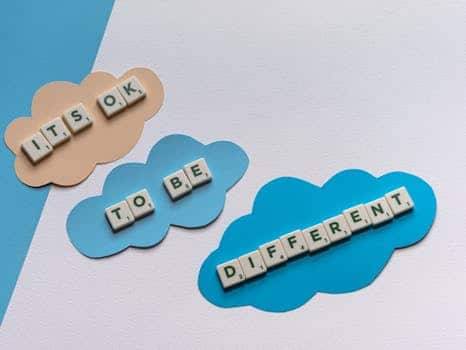How Retailers Are Embracing Diversity and Inclusion in Marketing
Marketing and advertising have always played a significant role in shaping our society’s views and ideas. It is a powerful tool that not only influences our purchasing decisions but also impacts our perceptions and beliefs. With the rise of diversity and inclusion movements globally, retailers have started to realize the importance of representing diverse and underrepresented groups in their marketing campaigns. In today’s world, where diversity is celebrated and inclusion is encouraged, retailers are embracing this change and making conscious efforts to promote diversity and inclusion in their marketing strategies. Let’s dive deeper into how retailers are embracing diversity and inclusion in marketing and why it matters.
The Importance of Diversity and Inclusion in Marketing
Before we talk about how retailers are embracing diversity and inclusion in marketing, let’s understand why it is essential. Diversity and inclusion in marketing mean representing and including people from different backgrounds, cultures, races, gender identities, and orientations in advertisements and campaigns. By doing so, retailers can create a sense of inclusivity, foster acceptance and acknowledgment, and promote equality. It also allows companies to reach a wider audience and connect with them on a personal and emotional level.
Moreover, with the growing diversity in consumer demographics, it is imperative for retailers to reflect this diversity in their marketing strategies. According to a study by Deloitte, diverse consumers want to see diversity reflected in the advertisements of the brands they support. By showcasing diversity and promoting inclusion in marketing, retailers can not only increase their customer base but also build long-term brand loyalty.
How Retailers Are Embracing Diversity and Inclusion in Marketing
1. Diverse Casting and Representation
One of the most visible ways retailers are embracing diversity and inclusion in marketing is through diverse casting and representation. Brands are now showcasing a diverse range of models of different ages, sizes, abilities, and ethnicities in their advertisements. This allows consumers from all walks of life to see themselves represented in the media and feel included and represented by the brand.
This shift towards diverse casting is evident in major fashion and beauty campaigns, where brands are breaking stereotypes and embracing models of all body types, skin tones, and backgrounds. For example, American Eagle’s Aerie brand promotes body positivity by featuring models of all shapes and sizes in their campaigns, while Rihanna’s Fenty Beauty has a diverse range of models representing different skin tones in their ads.
2. Embracing Inclusive Language
Using inclusive language in marketing is another way retailers are embracing diversity and inclusion. Inclusive language refers to words and phrases that are not specific to a particular gender, race, or culture and do not exclude anyone. Retailers are now moving away from gendered and stereotypical language, such as using “women” and “men” in their advertisements, and instead using gender-neutral terms like “everyone” or “people.”
Moreover, brands are also using inclusive language by featuring people of different cultures and backgrounds in their campaigns. For instance, Coca-Cola’s “Together is Beautiful” campaign celebrated diversity and inclusivity by showcasing people from different ethnicities and cultures enjoying a bottle of Coke together.
3. Collaborating With Diverse Influencers
Influencer marketing has become a powerful tool for brands to promote their products and reach a wider audience. Many retailers are now collaborating with diverse influencers to represent their brand and products. By working with influencers of different backgrounds, ages, and cultures, retailers can showcase their brand’s commitment to diversity and inclusion in a more authentic and relatable way.
For example, Gymshark, a fitness apparel brand, collaborated with diverse influencers, including body-positive advocates and those with disabilities, to showcase the brand’s inclusive values and promote their products.
Why It Matters
Apart from creating a more inclusive and accepting society, diversity and inclusion in marketing can have a significant impact on a brand’s success. Brands that embrace diversity and promote inclusion in their marketing have seen an increase in sales, brand loyalty, and overall positive brand perception. It also allows brands to stay relevant and resonate with their target audience, which in today’s market, is increasingly diverse and inclusive.
Moreover, by actively promoting diversity and inclusion, retailers can also play a role in breaking stereotypes and promoting social change. Brands have the power to influence society’s views and attitudes, and by showcasing diversity and inclusion, they can drive a positive change towards a more accepting and inclusive world.
In Conclusion
Retailers play a crucial role in shaping our society’s views and promoting social change. By embracing diversity and inclusion in marketing, they can create a more inclusive and accepting world. We live in a diverse and inclusive society, and retailers must reflect this in their marketing strategies to stay relevant, connect with their audience, and promote positive change.
As consumers, we also have the power to support and promote brands that champion diversity and inclusion. By choosing to support retailers who embrace diversity in their marketing, we can not only promote inclusivity but also encourage other brands to do the same. After all, diversity and inclusion are not just trends but necessary values that play a significant role in creating a better and more accepting world.








